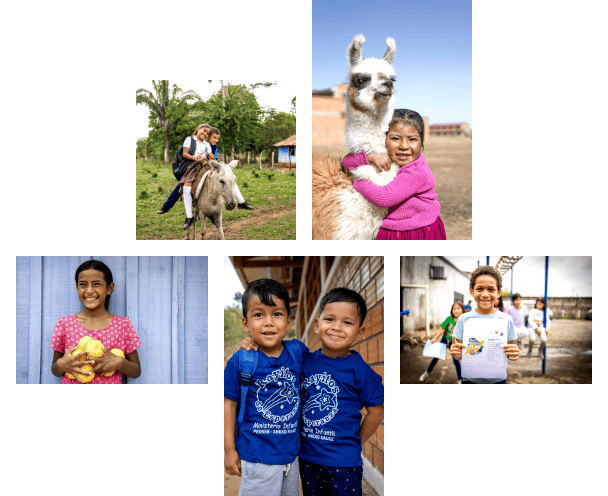
Adelina Alejandra Antonieta
Dotted with Mayan ruins, lakes and volcanoes, Guatemala is one of the most beautiful places in Central America. Mountains and rugged highlands dominate its landscape in the west. The Pacific plain is a narrow belt between mountains and ocean. In the southern highlands, the most populous region is Guatemala City and to the north is jungle. The country is slightly smaller than the state of Tennessee. Approximately half the country’s 13 million people are Amerindian or Mayan, including 21 indigenous groups. Most of the people still live in small farming villages growing corn, coffee, sugar and beans as their ancestors did. They are world-famous for their intricate handmade textiles of brilliant colors in red, yellow, blue and purple. It is estimated that more than two-thirds of the country’s children live in poverty. The country’s official language is Spanish but more than 20 languages are spoken by various indigenous communities. Guatemalans are predominantly Catholic; about 40 percent are Protestants and a small percentage follow traditional Mayan religions. Compassion works within nearly every department in the country. Much like many of its neighbors in Central America, Guatemala has a history riddled with warfare, coups and economic struggles. Two thousand years before Christ until the early 1500s, the great Mayan empire flourished throughout much of Guatemala. The Spanish conquered the area in 1524, but in 1821, the country gained independence from Spain. Since then, Guatemala’s politics have been marked by rivalries and insurgencies. After a series of coups, short-lived rulers and ever-increasing protest and repression, civil war erupted in the 1960s. Several attempts have been made to end the decades-old disputes, the most recent of which was the 1996 signing of peace accords by the government, leftist guerrillas and other factions. Despite Guatemala’s troubled history, the country enjoys freedom of speech and religion and continues to have a Constitutional Democratic Republic.
With $43 a month, you can help a child in poverty by ensuring:
Regular medical check-ups
Adequate nutrition
Individual Mentorship
Educational support and skills development
The opportunity to receive words of love and support
An introduction to God's love
What you will receive through your sponsorship:
Letters
The letters you send and receive from your sponsored child will allow you to learn about their lives while offering them support and encouragement.
Pictures from your child
Observe how the child you sponsor is growing through photos shared on your Compassion account.
Updates and prayer requests
You will receive regular prayer requests for your sponsored child and information about local crises affecting them.
Consistently, we receive some of the highest possible ratings from charity evaluators and watchdogs
"There are so many kids whose lives can be reached and transformed, just like mine was"

Jonathan Almonte
Compassion Representative, Dominican Republic

